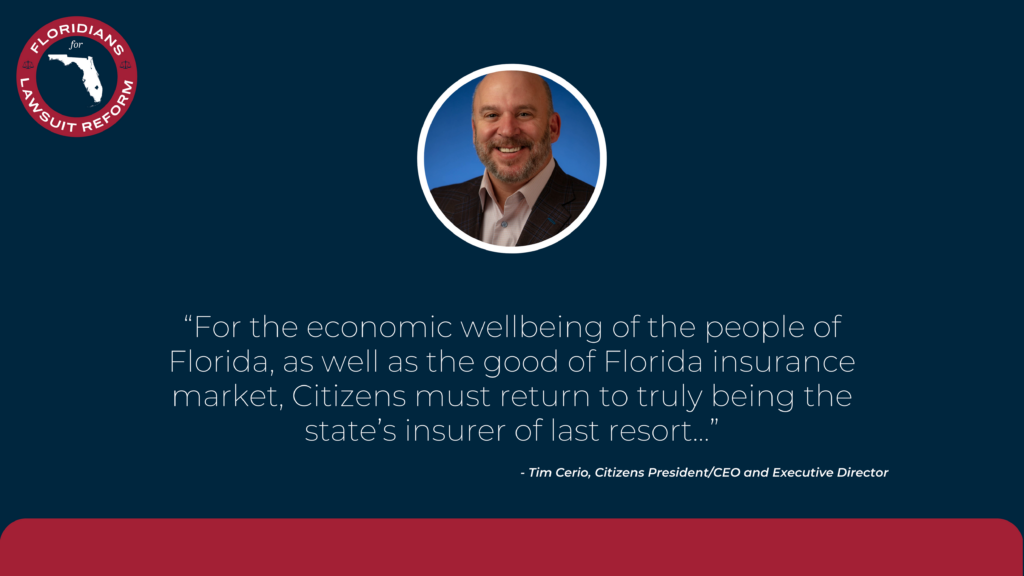
Property insurance rates in Florida are predicted to jump at least 40 percent in 2023, according to the Insurance Information Institute.
Mark Friedlander, the institute’s director of communications, said these increases come as Floridians are already paying more than homeowners in other states.
“Right now, Floridians pay arguably the highest average premium in the U.S.,” he said.
Friedlander said the average Florida homeowner is paying $4,231 for their property insurance, which is nearly triple the national rate of $1,544.
The growing cost of catastrophes has led to increased rates across the country. In Florida, the roughly $60 billion in insured losses from Hurricane Ian and the fact many insurers have left the state have caused property insurance rates to increase.
In February, Tampa-based United Property & Casualty Insurance Co. was the seventh private insurer to face insolvency in Florida. Of the roughly 135,000 policies with UPC, Friedlander said it’s estimated there’s around 20,000 outstanding claims from Hurricane Ian.
The state-backed Citizens Property Insurance Corp. absorbs policies that are dropped by private insurers. It is predicted to hit a record of 2 million policies in 2023.
“So, it’s a really bad situation for so many Florida homeowners right now,” he said.
Florida’s projected rate hikes are also outpacing national increases.
In Florida, homeowners are bracing for property insurance rates to climb by double digits for the second year in a row, according to Friedlander. In 2022, rates climbed 33 percent compared to the national rate increase of 9 percent.
Pinellas County had the highest rates in the greater Tampa Bay region last year, at nearly $3,000, and it is expected they will rise further in 2023. In Hillsborough County, annual premiums for property insurance are estimated to jump from an average of $2,500 to $3,500.
Insured homeowners can expect renewal notices, including any rate increases, to be delivered 60 days before their policy start date.
The prospect of another year of increases has left many Florida homeowners feeling financially vulnerable.
“How many Floridians are living paycheck to paycheck?” Friedlander asked. “They can’t afford to see these mass increases every year.”
At this rate, Friedlander said the climbing cost of property insurance is not sustainable for some Floridians to maintain their homes.
Ahead of the 2023 hurricane season, which begins June 1, Friedlander urges Floridians to resist reducing or dropping their coverage. Although saving money on the front end is tempting, he warns that being underinsured or uninsured after a storm like Ian can leave homeowners in a lurch.
“We saw this happen to many homeowners that were hit by Hurricane Ian,” he said. “They had reduced their coverage because it was getting too expensive, and now they’re in a much worse financial position than they were before the storm.”
Legislative changes made during December’s emergency special session could cause the rate increases to slow, Friedlander said.
“The 2022 legislation will move the Florida property/casualty market toward stabilization, but policyholders’ premium rates will not be coming down any time soon,” according to the report from the Insurance Information Institute.
It could take as long as 18 months for consumers to feel the real impact of the rule changes, he said.
To reduce the cost of premiums in the meantime, Friedlander advises homeowners to bundle home and auto insurance, increase deductibles for a lower monthly rate and inquire about deals like loyalty or senior discounts.
Gabriella Paul covers the stories of people living paycheck to paycheck in the greater Tampa Bay region for WUSF. She’s also a Report for America corps member. Here’s how you can share your story with her.
Copyright 2023 WUSF 89.7. To see more, visit WUSF 89.7.
